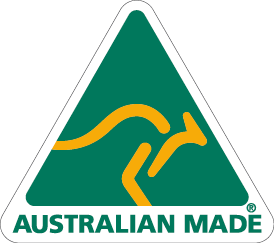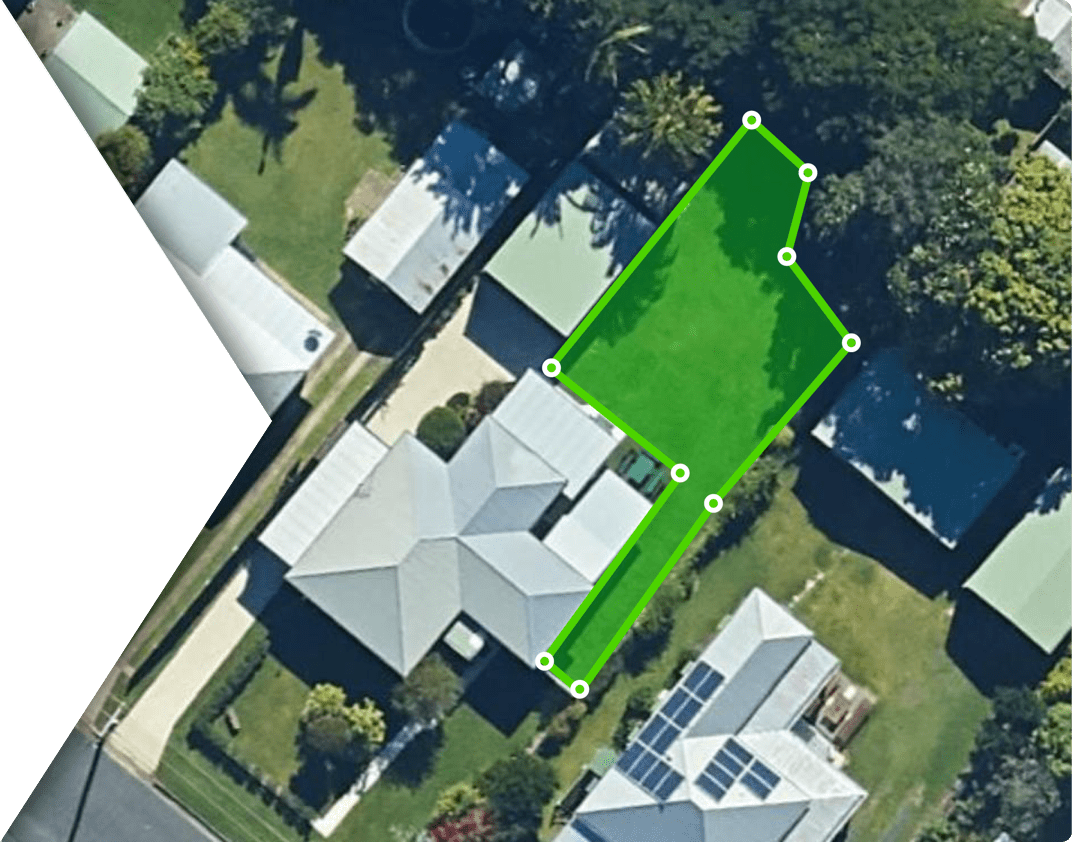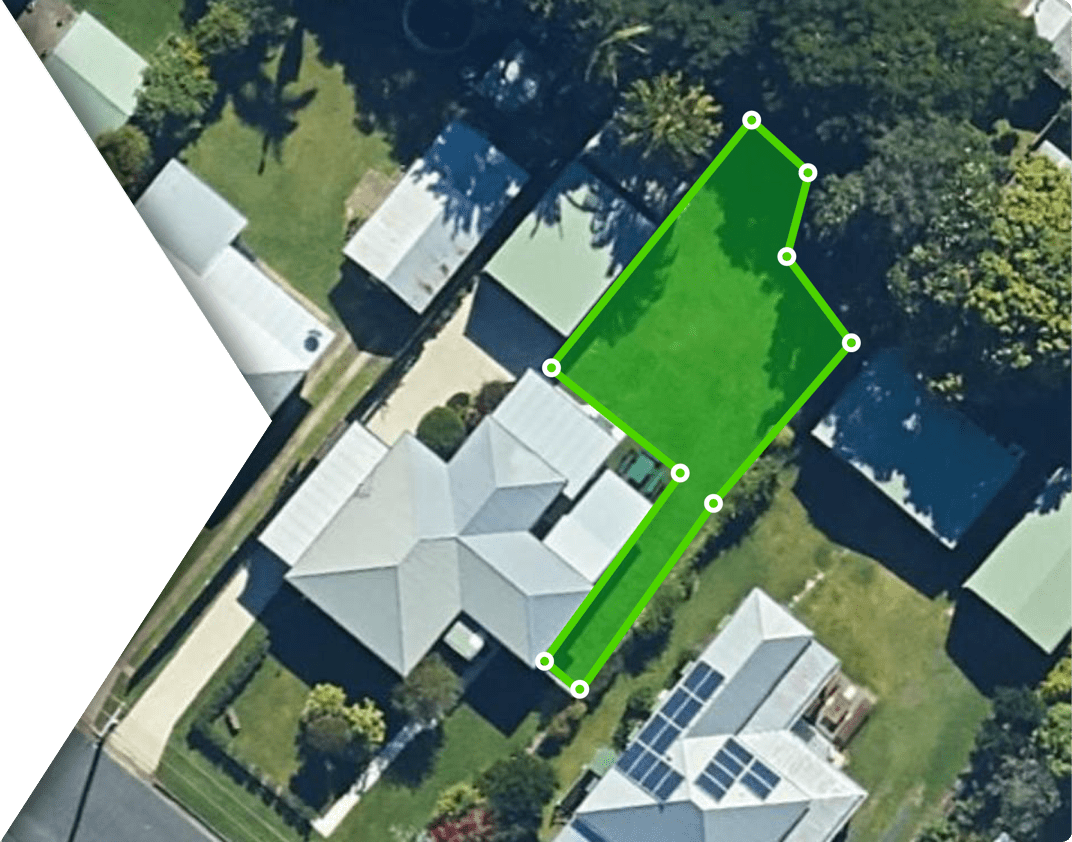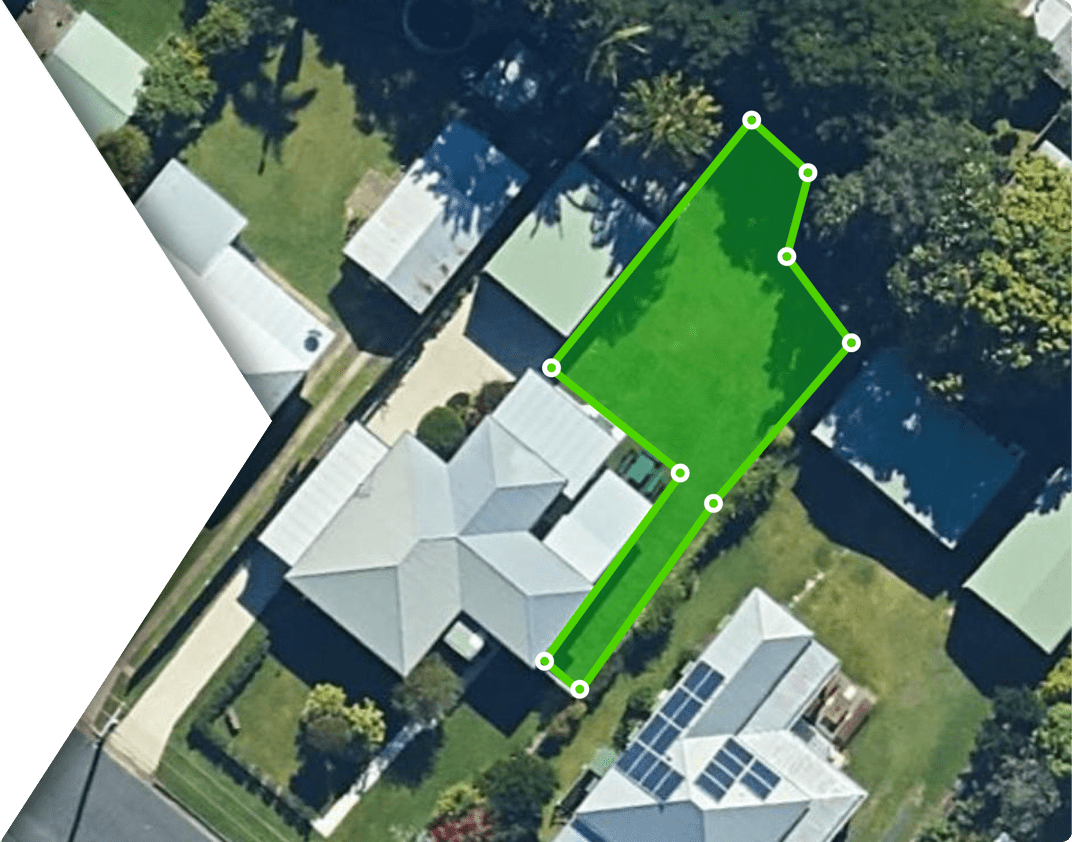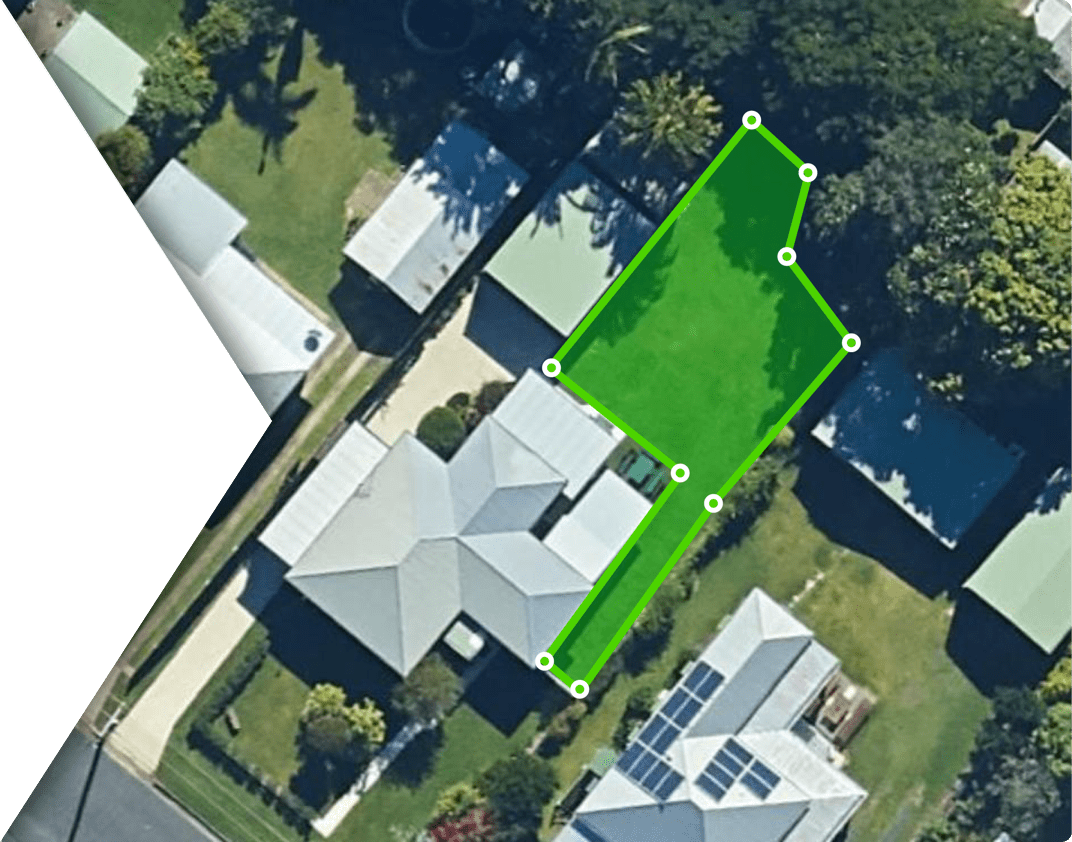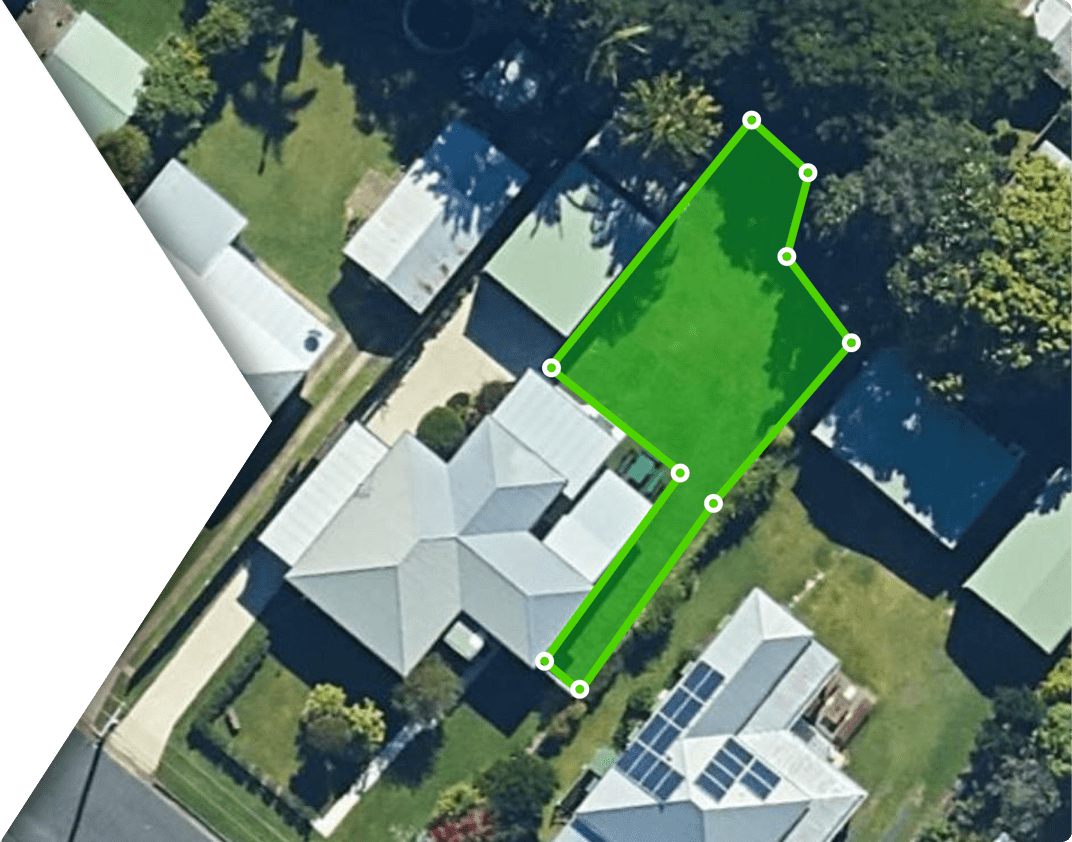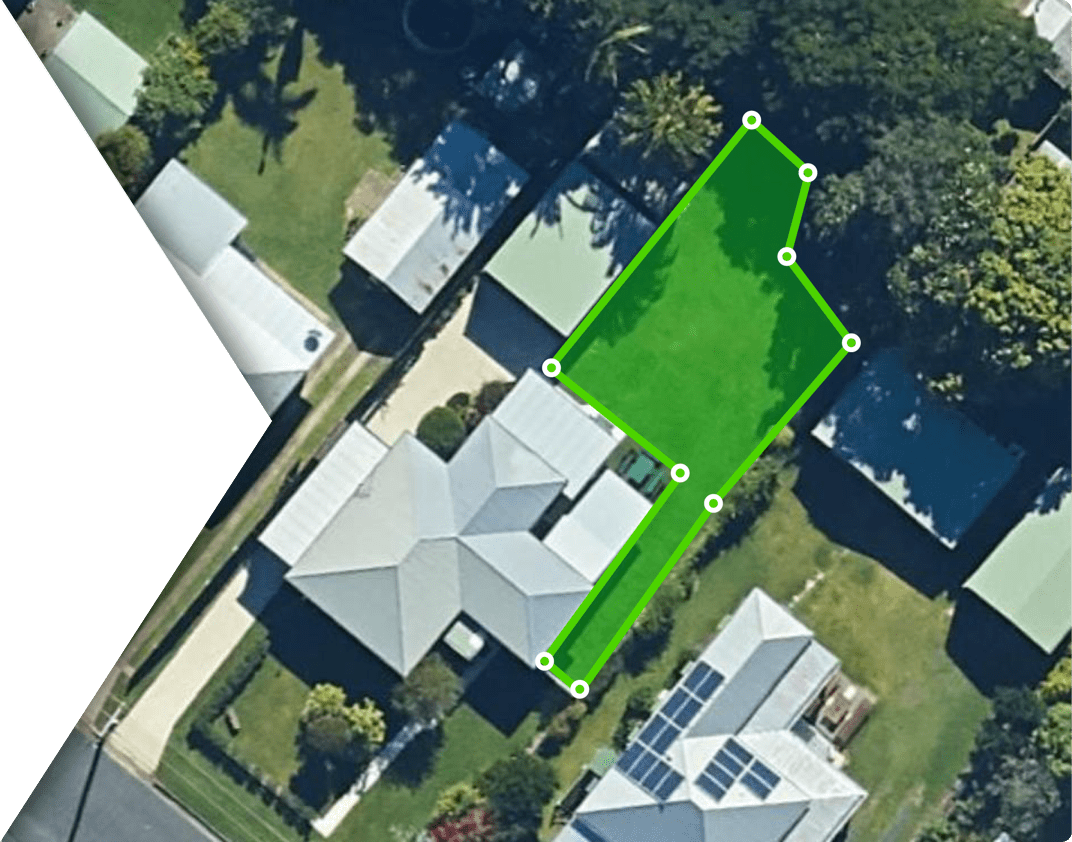SYNLawn Installation
Installing SYNLawn artificial grass can be an easy and fun DIY project. You will find step-by-step instructions for installing:
If you are not confident at installing the grass yourself or your installation area is greater than 25sqm, we highly recommend using a SYNLawn Certified Installation Professional. Large installations can be very labour-intensive and often require specialised skills. Contact SYNLawn on 1300 796 529 to find your nearest Artificial Turf Installation Professional. We have Professionals available Australia-wide.
Before actioning your SYNLawn artificial grass installation, make sure you have all the equipment required, as listed:
Specialty Tools Needed
- Everseal adhesive tape (5LM or 25LM)
- 150mm flat head nails or landscape pegs
- Turf rake (for bristle fibers)
- Sand spreader
- Vibrating plate (hire)
- Dried silicon sand
Commonly Tools Needed
- Stanley knife
- Hammer
- Yard rake
- Shovel
- Wheelbarrow
- Tape measure
- Wide shop broom
Regular Artificial Grass Installation
Following these steps to install your SYNLawn artificial grass, will give you a beautiful, green and worry-free lawn for years to come.
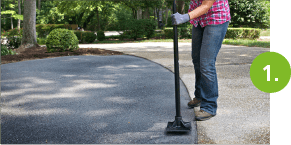
Prepare the base
Excavate the area to a depth of 80mm. Lay 80mm of crushed rock/road base and compact it with a vibrating plate. The level of crushed rock/road base when compacted should be 15-20mm below “finished height” of surrounding edging/paving. This will optimise your artificial grass installation.
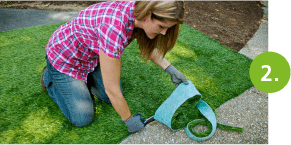
Trim to size
Lay your artificial grass, making sure you start from one edge and roll out. Cut the over-hanging quantities with a sharp stanley knife. Remove the “salvage” or black strip from both sides of the grass. This cannot be used to join the grass.
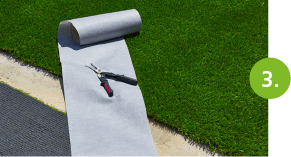
Glue together seams
When joining rolls of grass together, be sure to use Everseal adhesive tape along the seams. Lay the silver backing of tape down on the crushed rock/ base with the white side facing up. Place the two pieces of grass onto the tape, with each edge placed evenly in the centre of the tape. Remember to put pressure onto the seams once the grass has been joined to promote good adhesion.
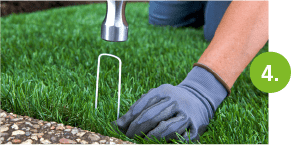
Secure in place
Once you have covered the complete area, nail all of the perimeters down at 500mm intervals using flat head nails or landscape pegs.
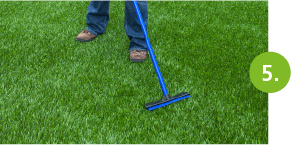
Groom your grass
Using a sand spreader, top dress the grass with an even distribution of dried silica sand fill to a depth of 15-20mm. A yard broom can be used at this stage to sweep
in the sand evenly and to also brush the grass blades straight.
Important
- Do not attempt to lift the grass by yourself. It is advised that the rolls be cut into manageable lengths before moving.
- Always run grass in the same direction.
- Refer to the Product Specification sheet for recommended amount of infill required.
- This synthetic grass installation information has been supplied as a reference guide only. SYNLawn Warranties do not cover installation.
We have installation professionals located around the country including Melbourne, Sydney, Brisbane, Perth and Adelaide for all your artificial grass needs.
SYNLawn artificial grass is designed to withstand our harsh Australian climate to normal surface temperatures of approximately 65-75C. If the temperature increases above melting point the turf fibres will begin to shrink and eventually disintegrate or melt completely. This can occur if sunlight is reflected off surfaces such as doors, windows, polished gutters, mirrors, reflective panels or any other surface which can reflect sunlight onto your turf.
To avoid this we recommend that, if possible, you avoid laying your synthetic turf directly up against a reflective surface during installation, by creating a 100cm border between them. Other suggestions include (again where possible) covering windows with a screen or awning, using non-reflective paint on shiny surfaces like gutters and drainpipes or adjusting the angle of any reflective panels or mirrors.
If the reflection is occurring from another building, you may need to find an alternative for that particular patch of affected area eg a soiled area with a small tree or plants, pebbled rocks or a pond.



